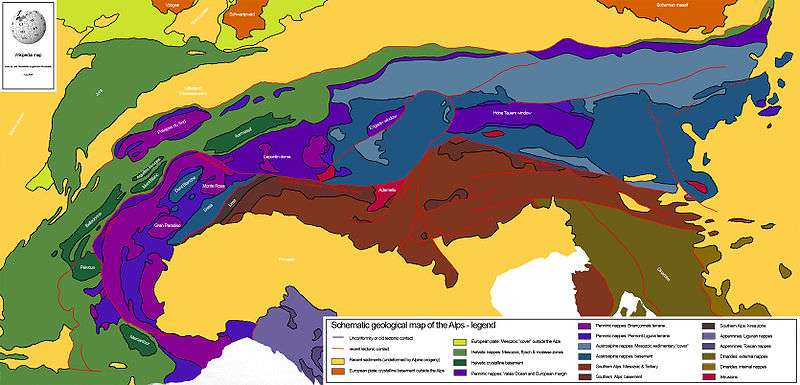Hohe Tauern window
| Geology of the Alps |
|---|
 |
| Tectonic subdivision |
| Penninic nappes |
| Austroalpine nappes |
| Southern Alps |
| Formations & rocks |
| Geological structures |
|
Aarmassif | Dent Blanche klippe | Engadine window | Flysch zone | Giudicárie line | Greywacke zone | Hohe Tauern window | Molasse basin | Penninic thrustfront | Periadriatic Seam | Ivrea zone | Lepontin dome | Rechnitz window | Rhône-Simplon line | Sesia unit |
| Paleogeographic terminology |
| Briançonnais zone |
| Piemont-Liguria Ocean |
| Apulian or Adriatic plate |
The Hohe Tauern window is a geological structure in the Austrian Central Eastern Alps. It is a window (in German fenster) in the Austroalpine nappes where high-grade metamorphic rocks of the underlying Penninic nappes crop out. The structure is caused by a large dome-like antiform in the nappe stacks of the Alps.
The relatively hard rocks of the Hohe Tauern window are more resistant to erosion, so the window has a high relief. The mountain chains thus formed are called the Hohe Tauern. Most of Austria’s highest mountains are in the Hohe Tauern, among them the Großglockner (3798 m) and Großvenediger (3674 m).
See also
Coordinates: 47°00′N 12°30′E / 47.000°N 12.500°E